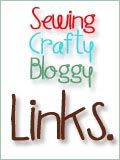Fantastic tips and tricks found at ideasforquilting.com
Tips and Techniques for Quick and Easy Quilts
Before you start your first quilt , take the time to review and enjoy some of the Tips and Techniques to see if maybe there is something that can help save you time or just maybe make things a little bit easier.
Shortcuts are always helpful in the fast and busy world that we live in.
*** Choose fabrics for your quilt block which have no obvious direction to the pattern.
for your quilt block which have no obvious direction to the pattern.
An overall non-directional print will give greater flexibility when using rotary cutting and strip piecing techniques.
*** Make the most use of the rotary cutter. This can save you tons of time and you are more accurate with the rotary cutter.
This can save you tons of time and you are more accurate with the rotary cutter.
*** Strip piece and cut whenever it is possible.
*** Design your quilt with squares, rectangles and strips. I know the sharp points look great but they also take more time and planning. But the simple lines of squares make a quilt come together very fast.
with squares, rectangles and strips. I know the sharp points look great but they also take more time and planning. But the simple lines of squares make a quilt come together very fast.
*** Machine piece, quilt and plan for the least amount of hand work as possible.
*** Make square or rectangle quilts and avoid irregular outside edges.
*** Cut binding fabric on the grain to get the most from the fabric (cutting on the bias requires more fabric).
*** Select fabric which is washable and color fast. Quilts for a baby or crib quilts usually receive harder use, so a good quality fabric will last longer and looks better.
or crib quilts usually receive harder use, so a good quality fabric will last longer and looks better.
*** When you are working with smaller quilt pieces and smaller quilt blocks, it doesn’t mean that you can’t get a piece turned upside down or turned the wrong way when you are stitching the pieces together. So always make sure you are sewing the rights sides together.
*** You owe it to yourself to take a break after creating all of your quilt blocks and laying them out. Step back and look at the blocks from a distance. You may want to change the placement of one or two pieces or blocks. This is easy to do before you sew all of the blocks together.
*** Spray starch your fabric before you cut or sew. Starched fabric is very easy to mark, cut and sew. It prevents markers from leaving permanent lines on your fabrics. It helps you to cut accurate straight lines. It also makes sewing extremely easy. Bias edges don’t stretch, tiny pieces aren’t pulled into the needle hole opening and point matches are more accurate.
*** Press seam allowances. Press with care. Do not drag the iron across the piecing. Use a gentle up and down motion to prevent stretching bias edges. Use a warm iron with lots of steam. Press seams as you sew and never stitch across an unpressed seam.
Press with care. Do not drag the iron across the piecing. Use a gentle up and down motion to prevent stretching bias edges. Use a warm iron with lots of steam. Press seams as you sew and never stitch across an unpressed seam.
*** Use fine cotton quilting thread , a small machine quilting needle
, a small machine quilting needle  and short stitch length. Thread takes up space in a seam. A thick thread and a large needle can distort a complex multi pieced block. The finer the thread and the smaller the needle that you use, the more accurate your piecing is.
and short stitch length. Thread takes up space in a seam. A thick thread and a large needle can distort a complex multi pieced block. The finer the thread and the smaller the needle that you use, the more accurate your piecing is.
*** Choose the correct pressure foot for the type of piecing. There are two basic presser feet for piecing. For strip piecing and straight seams, use a ¼” straight stitch presser foot. This foot usually has a true ¼” width on the right hand side of the foot. There are many styles available. For more detailed matches, use an open toe or no bridge embroidery presser foot. The bridge or small metal bar, directly in front of the needle hole opening is cut away to give you a clear view of the needle and your sewing, making your matching simpler.
for the type of piecing. There are two basic presser feet for piecing. For strip piecing and straight seams, use a ¼” straight stitch presser foot. This foot usually has a true ¼” width on the right hand side of the foot. There are many styles available. For more detailed matches, use an open toe or no bridge embroidery presser foot. The bridge or small metal bar, directly in front of the needle hole opening is cut away to give you a clear view of the needle and your sewing, making your matching simpler.
















No comments:
Post a Comment